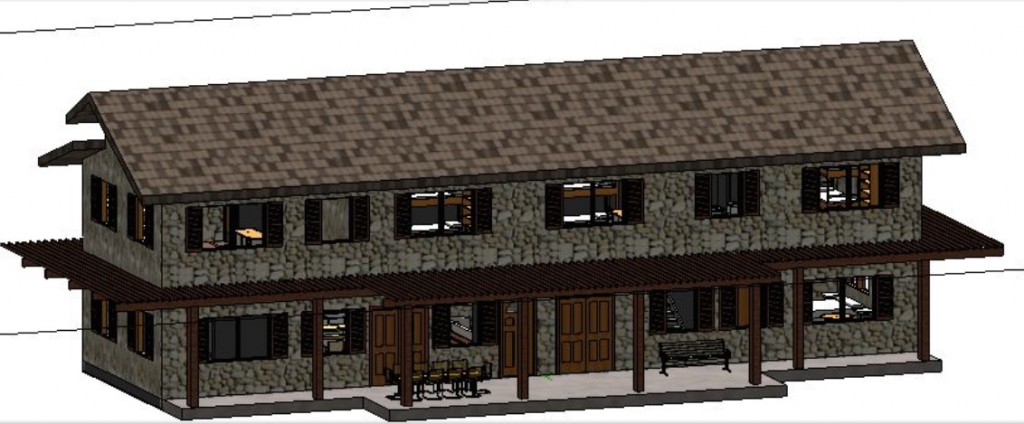As papers are translated and lawyers review documents, we are getting closer to the day when we can actually start building! While there are still many things that need to be worked out, these details are all in His hands. In the meantime, we’re excited to share a bit about how things have been progressing.
In December of last year, Dan Valvano from Livingston, NJ, visited us to help Mark draw up the architectural plans for the orphanage. We asked him to jot down some impressions, reasons for visiting, and goals he kept in mind while working on this project.
Why visit?
I visited Brazil hoping to both see and help the ongoing work there. I wanted to familiarize myself with the area and hopefully get a better understanding of the needs and lifestyles of the people as well as the land, construction methods, and climate of the surrounding area.
Why the orphanage?
I chose the orphanage as my thesis project because I knew I could use what I had learned in school to help the ongoing work. I also wanted to be a part of a real project and a project that I could continue to help develop after I graduated.
What struck you most while in Brazil?
When I was there the willingness for people to listen and learn, and the reception of gifts was amazing. I had never seen so many people so willing to listen and receive.
Priorities in planning?
As far as the project goes, there were a few main priorities when coming up with the idea for the design. Keeping it simple and easy to build at low cost was definitely a factor. I wanted to use the local materials and surrounding environment in the design. For example, the wind in Aningas blows at a constant 19 mph average, year round. Given the area is very hot, it makes sense to orient the buildings in specific ways to help optimize the wind for natural cooling of the buildings, while also orienting them in a way to help protect them from the sun.
Finally, I wanted to make sure I continued to listen to advice from Mark and Lori since they live there, know the area, and have seen other buildings like this.
How was your choice of project supported at home?
Back home I got a lot of support from my family for picking this thesis project, but it was not understood the same way at school. I got a lot of scrutiny about my thesis project from both the teachers and other students. They did not understand the project, could not see why I wanted to do a project that had boundaries, and were not sure if I could design a project thousands of miles away. Many of my friends and other students, to this day, still say I “took the easy way out” by doing a simplistic design, but I don’t see it like that. I simply tell them I designed the best solution for the needs in the area, being simple, inexpensive, and having boundaries just happened to be some of the needs.


Speak Your Mind